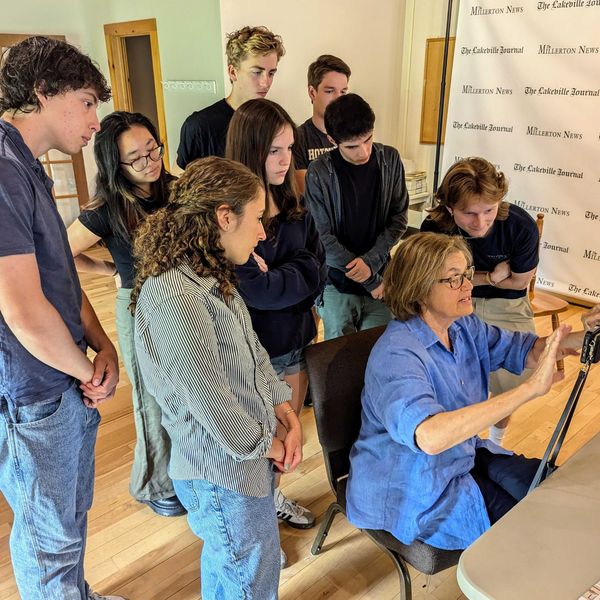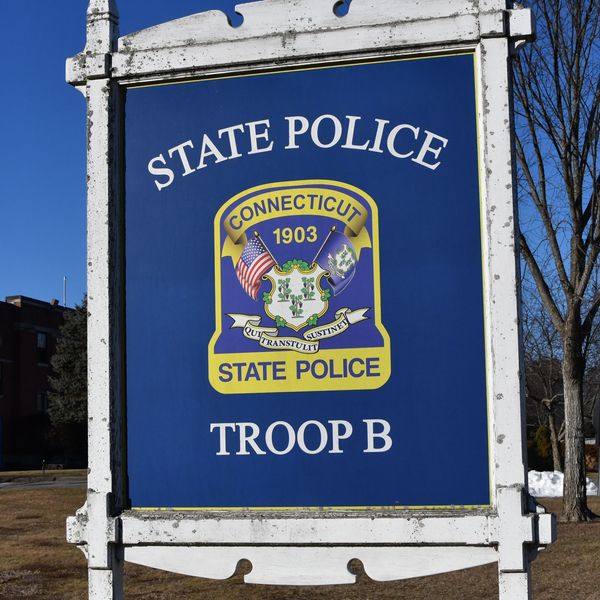Latest News
Lisa Mae Keller
Aug 06, 2025
LIME ROCK — Lisa Mae Keller of Lime Rock, Connecticut, passed away peacefully at her home on July 26, 2025, following a yearlong battle with cancer. Lisa remained at home between lengthy stays at Smilow Cancer Hospital – Yale New Haven. Throughout Lisa’s ordeal, the family home was a constant hub of love and support, with friends and relatives regularly dropping by. Their presence lifted Lisa’s spirits and helped her stay positive during even the toughest moments. The family remains deeply grateful to the community for their unwavering kindness and encouragement.
Born on June 2, 1958, in Bridgeport to Mae and Robert Schmidle, Lisa graduated from Newtown High School in 1976. Lisa first attended Ithica College to pursue a degree in fine arts concentrating on opera. Drawn to a more robust and challenging curriculum, Lisa transferred to Whittier College, Whittier, California earning a Bachelor of Science degree. It was in 1988 that Lisa met and married Robert (Rob) Keller in Newtown, Connecticut. Together, they embarked on a remarkable journey. The couple started small businesses, developed land in Litchfield County and welcomed in quick succession their sons Baxter and Clayton. The growing family discovered the long-abandoned historic Lime Rock Casino in 1993, while attending a race at Lime Rock Park. The couple found it difficult to commute for work while raising a family and restoring a vintage home. Lisa persuaded her husband that chimney sweeping was a noble profession, leading them to purchase the established business, Sultans of Soot Chimney Sweeps. She later leveraged her role into ownership of the largest U.S. importer of vintage Italian reproduction gun parts. Even as her entrepreneurial ventures expanded, Lisa continued managing the pick, pack, and ship operation for Kirst Konverter, though she sold the remainder of the business prior to her illness. Lisa will be remembered for her business acumen, community service, and being a trained vocalist with the Crescendo Coral Group of Lime Rock. Lisa tended the extensive gardens around the home and curated an art collection that adorns the walls within. Baking cookies was a passion. Countless cookie packages were sent world wide to each son and their military friends while deployed. It is still undetermined in the Keller house whether the Army or Marines leave less crumbs. At Christmas, the Lakeville Post Office staff would post over 80 packages of cookies to lucky recipients, while receiving a tray for their effort. Unable to bake cookies in her last year, Lisa selflessly compiled and self-published “ Pot Luck at The Casino”, a 160 page book of all of her favorite recipes, sent to everyone on her cookie list. It was a true labor of love.
A love of pearls and turquoise inspired Lisa to design and commission heirloom quality jewelry to be passed down thru the generations. Visitors were often gifted Tahitian pearl jewelry and knowledge gleaned from years of research. Travel plans for further pearl and gem study were cancelled when Lisa received her cancer diagnosis.
One of her most enduring passions—and a decades-long devotion—was embracing the role of American mother to the young German football players on scholarship at Salisbury School. Unable to return home during holidays and school breaks, the boys found a second family with the Kellers. Lisa did what any mother would do: baked endless batches of her legendary cookies, cooked countless home-made meals, and often counseled the young men through the trials and tribulations of young love. Years later, and with families of their own, they still make it a point to ‘swing by’ and visit ‘Momma Lisa’ whenever they’re back in the States.
Lisa is predeceased by her parents and is survived by husband, Rob, and two sons, Baxter (Elizabeth) and Clayton (Brette), two grandchildren, Isabel and Ezra, two brothers Robert, Jr. (Pam) Schmidle, Paul (Wendy) Schmidle, and multiple nieces and nephews. Grandson Ezra was born and met Mama Lisa just days before she passed.
A graveside ceremony will be held on Aug. 9 at 11 a.m. at the Lime Rock cemetery, with a reception at the Lime Rock Episcopal Church. A celebration of life will be held at the family home, The Historic Lime Rock Casino, on Oct.11, 2025 at 4 p.m.
All are welcome to both events. In lieu of flowers, donations can be made to SalvageUSA.org, a nonprofit organization dedicated to serving the special operations active duty and veterans community.
Keep ReadingShow less
John Richard Krupinski
Aug 06, 2025
LITCHFIELD — John Richard (Jr.) Krupinski, of Winsted, Connecticut passed away on Sunday, July 27, 2025, at Hartford Hospital.
Born on Jan. 13, 1948, in Torrington, Connecticut he was the son of John Joseph Krupinski and Eleanor (Kavesky) Krupinski. John grew up in Litchfield, Connecticut and graduated from Litchfield High School in 1967. While still in high school, John was a member of the Litchfield Volunteer Fire Department.
John joined the Air Force in 1968 and was honorably discharged in 1972 as a Sargent. John went on to work for the State of Alaska with the Department of Fish and Game as well as being an Alaska State Trooper. Upon returning to Connecticut John worked for the State of Connecticut as a Deputy Warden for the Forestry Department.
John loved the outdoors, was an avid fly fisherman and from a young age enjoyed tying his own flies. John was known as the best fly tier in Northwest Connecticut. John also competed in Archery, receiving numerous trophies.
John is survived by his daughter, Cheryl L. Bentley, sister, Karen J. Krupinski, and brother, Thomas J. Krupinski. John was preceded in death by his parents, John and Eleanor Krupinski, his wife, Margery Hull Krupinski, and their beloved pets.
Calling hours will be held at Thurston Rowe Funeral Home, 283 Torrington Road, in Litchfield, on Sunday, Aug. 10, 2025 from 3 p.m. to 5 p.m. A funeral service with Military Honors will be held at Hillside Cemetery, 76 Walnut Street, in Torrington, on Thursday, Aug. 21, 2025 at 12:30 p.m.
In lieu of flowers, donations can be made to Farmington River Anglers Association, Housatonic Fly Fisherman’s Association or Trout Unlimited, Northwest Connecticut Chapter.
To send the family online condolences kindly visit www.thurstonrowefuneralhome.com
Keep ReadingShow less
Gilbert Kenneth Schoonmaker
Aug 06, 2025
WINSTED — Gilbert Kenneth Schoonmaker, of Monroe, Connecticut, passed away peacefully on July 24, 2025, at the age of 77. Born on Jan. 18, 1948, in Winsted, Connecticut to Gilbert and Alta (Bierce) Schoonmaker, Gil spent four decades enjoying life on Highland Lake before settling in Monroe.
He is lovingly survived by his wife of 56 years, Sally (Gustafson) Schoonmaker, and his two daughters, Lynn Sindland and her husband Lee of Lead Hill, Arkansas, and Deb Pikiell and her husband Tim of Bristol, Connecticut. Gil was a proud grandfather to Ozzie, Tommy, Betsy, Katie, George, Lucy, Maddie, Joey, and Julia, and he cherished his time with his eight great-grandchildren. Gilbert leaves behind his siblings Ann, Gary, Gail, Jan, and Tim.
Gil met Sally, the love of his life, while attending Housatonic Valley Regional High School. He went on to attend Northwest Community College before serving in the United States Air Force. Professionally, he was the longtime owner of Universal Business Equipment in Bridgeport, a role he held with pride for more than 20 years.
Gil had a lifelong passion for the outdoors and was an avid golfer and fly fisherman. He also enjoyed birdwatching and gardening. Perhaps more than anything, Gil will be remembered for his love of cooking. He took great joy in preparing meals for family and friends. Right up until his final days, he was finding joy in discovering new ways to cook the vegetables he grew in his garden.
Friends and family attended a funeral service at Stepney Baptist Church, 423 Main Street in Monroe on Tuesday, July 29 at 11 a.m.
To leave an online message of condolence, please visit Gilbert’s tribute page at www.OBrien-FuneralHome.com
Keep ReadingShow less
loading








